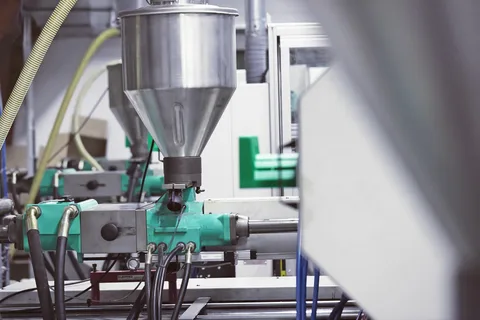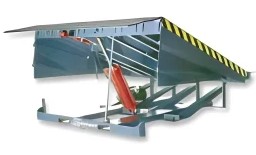Injection molding has long been a cornerstone of manufacturing, providing a scalable, efficient, and versatile means of producing plastic components. As the technology continues to evolve, advances in materials, processes, and automation are shaping the future of injection molding. This article delves into emerging trends and technological advancements that are likely to impact the industry, ensuring manufacturers can meet the demands of the future.
Table of Contents
ToggleSustainable Practices in Injection Molding
Sustainability has become a driving force in nearly every industry, and injection molding is no exception. With global pressure to reduce environmental impact, manufacturers are adopting sustainable practices in their production processes. One significant shift is the increased use of recycled materials in molding, which reduces waste and lowers dependency on virgin plastics. By implementing advanced sorting and cleaning technologies, manufacturers can now use recycled materials without compromising the quality and strength of the molded parts.
Another important trend in sustainable injection molding is the reduction of energy consumption. Advanced electric and hybrid injection molding machines consume significantly less energy than traditional hydraulic machines. These energy-efficient systems not only reduce the carbon footprint of manufacturing processes but also lower operational costs. Combined with improvements in mold design and the use of more eco-friendly materials, these trends are pushing the industry towards a more sustainable future.
Smart Manufacturing and the Role of IoT in Injection Molding
Smart manufacturing, driven by the Internet of Things (IoT), is revolutionizing the injection molding industry. IoT devices enable real-time monitoring of the molding process, allowing operators to track various parameters such as temperature, pressure, and cycle time. This data-driven approach enhances the accuracy and efficiency of the injection molding process, resulting in higher-quality products and reduced production downtime.
Predictive maintenance, facilitated by IoT sensors, is also becoming a key component of smart manufacturing in injection molding. By analyzing data from machinery and detecting early signs of wear or malfunction, companies can address maintenance needs before they lead to costly shutdowns. This proactive approach not only ensures consistent product quality but also extends the lifespan of the equipment, resulting in significant cost savings.
Advanced Materials in Injection Molding
The development of new materials is broadening the capabilities of injection molding, allowing manufacturers to produce parts with enhanced strength, flexibility, and heat resistance. High-performance polymers such as PEEK (Polyether ether ketone) and PPSU (Polyphenylsulfone) are now frequently used in industries requiring materials that can withstand extreme conditions, such as aerospace, automotive, and medical fields. These advanced materials provide superior mechanical properties and chemical resistance, expanding the applications of injection-molded components.
In addition to high-performance polymers, bioplastics are gaining traction in the injection molding industry as a sustainable alternative to traditional petroleum-based plastics. Bioplastics, derived from renewable sources like corn starch and sugarcane, offer reduced environmental impact while still providing similar functionality. As the technology for processing bioplastics improves, they are expected to become a viable option for a wide range of injection-molded products, aligning with industry sustainability goals.
Automation and Robotics in Injection Molding
Automation is transforming injection molding by streamlining operations and enhancing precision. Automated systems now manage various stages of the process, from material handling to quality control, minimizing the need for human intervention. By reducing the risk of human error and improving process consistency, automation has significantly increased the efficiency and productivity of injection molding facilities. Robots, in particular, are being used for tasks like part removal, assembly, and inspection, resulting in faster production cycles and higher-quality parts.
Collaborative robots, or “cobots,” are also playing an increasing role in injection molding. Unlike traditional robots that operate in isolated spaces, cobots can safely work alongside human operators. This flexibility allows companies to optimize their production lines by integrating both human and robotic skills. With advancements in machine learning and artificial intelligence, these robots are becoming smarter, capable of adapting to various tasks and further driving productivity in injection molding facilities.
3D Printing and Hybrid Manufacturing Techniques in Injection Molding
The integration of 3D printing with traditional injection molding processes is opening up new possibilities for manufacturers. 3D printing is being used to create molds for low-volume production, which is especially beneficial for prototyping and short production runs. This approach significantly reduces the time and cost associated with mold fabrication, allowing companies to test and refine products before committing to high-volume production. Hybrid manufacturing, which combines 3D printing and injection molding, offers manufacturers more flexibility in meeting specific design and production needs.
Another area where 3D printing is making an impact is in the production of complex and customized parts. For highly detailed components or those with intricate geometries, additive manufacturing can create molds or parts that would be difficult or impossible to produce using traditional injection molding alone. By combining the strengths of both technologies, manufacturers can leverage the speed and scalability of injection molding with the design freedom of 3D printing, resulting in innovative solutions and reduced lead times.
Conclusion
The future of injection molding technology is being shaped by sustainability, smart manufacturing, advanced materials, automation, and hybrid techniques like 3D printing. As these trends continue to develop, manufacturers are finding new ways to improve efficiency, reduce environmental impact, and expand the range of applications for injection-molded components. Embracing these innovations will allow companies to remain competitive and meet the demands of an evolving marketplace, ensuring that injection molding remains a vital part of modern manufacturing.









